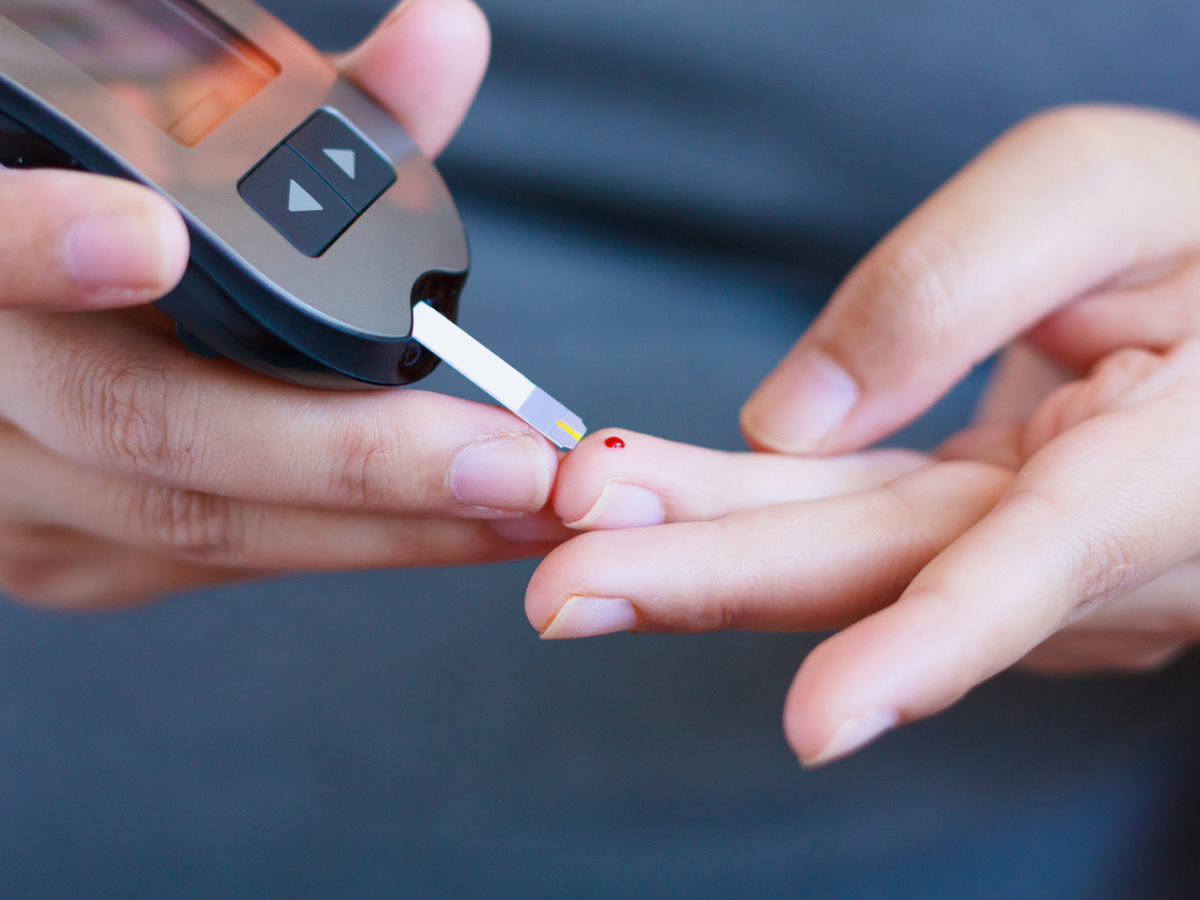[ad_1]

By Artika Bansal and Rashmi Mabiyan
New Delhi: A new trend is emerging in India where more and more young people are being diagnosed with diabetes. What was earlier known as an older people’s disease, diabetes is now commonly detected in the 30s and 40s. This prevalence of early-onset diabetes is becoming a cause of concern, keeping in mind the chances of complications associated with diabetes at the prime time of one’s life.
Experts suggest that the early onset of diabetes, defined as diabetes before 40 years of age, has been increasingly developing as the symptoms often get ignored because people don’t expect to be diagnosed with the condition so early in their life. This results in a delay in treatment which can further lead to significant damage to the young.
New figures released in the findings from the 10th Edition of the International Diabetes Federation (IAF) Diabetes Atlas, show that over 1 in 12 adults in the country are affected by the condition. Once diagnosed with diabetes, the only way to live a healthy life is by managing blood sugar levels and maintaining a healthy lifestyle.
Prevalence of early-age diabetes
Although India has always had a burden of non-communicable diseases, the alarming increase in diabetes needs immediate attention as it can lead to secondary diseases if not managed in time. Sharing about the high prevalence of early diabetes in India, Dr Yogesh Kulkarni, Associate Dean, Shobhaben Pratapbhai Patel School of Pharmacy & Technology Management (SPPSPTM), said, “In India, the overall prevalence of early diabetes among young boys is 12.3 per cent and amongst girls is 8.4 per cent. The urban young population is at higher risk of diabetes than the rural counterparts.”
It is important to note that even children have now become prone to diabetic conditions more than ever before. Type 1 diabetes, also called juvenile diabetes, is the most common form diagnosed in children where the pancreas does not secrete enough insulin. Such children are looked after by pediatric diabetes care until they are old enough. Calling India the diabetes capital of the world today, Dr Varsha Kataria, Senior Pediatrician, Apollo Clinic, Kharadi, Pune, informed “Total prevalence of type 1 diabetes in Indians is 2.5 lakhs in all age groups out of which one lakh are children under 14 years of age. As per ICMR 2022 report, India has 95,600 of type 1 diabetes in children less than 14 years of age and every year around 15,900 new cases are being reported in the same age group.”
Early-age diabetic complications
The youth-onset diabetes is associated with prolonged disease exposure and a higher risk of chronic complications. The pathological processes linked with diabetes, including the development of insulin resistance and the deterioration of beta-cell function, are said to progress more rapidly in youth-onset diabetes than in adult-onset diabetes. These factors lead to premature development of complications, with adverse effects on quality of life and unfavourable long-term outcomes. Since youth-onset diabetes affects individuals at their working age, it causes further adverse societal effects.
Elaborating on the onset of diabetes at a younger age, Dr Ritesh Gupta, Director, Diabetes and Metabolic Disease, Fortis CDOC Hospital, said, “When diabetes develops at a young age, there are several possible scenarios; the person may have type 2 diabetes as seen in older age group, or they may have type 1 diabetes as seen in younger individuals, or they may have some unusual types of diabetes like flatbush diabetes or diabetes secondary to other diseases like pancreatitis. Out of these, the commonest is to develop type 2 diabetes.”
A definite difference exists between diabetes at a young age and at an older age. With young-age diabetes, there is a high likelihood of complications affecting various organs. “There is an increased risk of heart disease, kidney disease, retinopathy and neuropathy-like complications at a younger age for them. It is important to understand that early strict control of blood sugars along with lifestyle changes can prevent most of the complications of diabetes at a later age,” added Dr Gupta.
The researchers that studied the mechanisms responsible for youth-adult contrast in the various aspects of type 2 diabetes, suggest type 2 diabetes to be more aggressive in youth than adults. With the young generation being more insulin resistant and having hyperresponsive beta-cells compared with adults, type 2 diabetes appears with a faster rate of deterioration of beta-cell function and poorer response to glucose-lowering medications in youth.
The dramatic increase in the prevalence of type 2 diabetes in adolescents and young adults demands attention to its possibility of causing greater harm to other organs. Commenting on the same, Dr Alpesh Jain, Consultant Endocrinologist, Masina Hospital, said, “Impact on any organ depends upon numbers of factors like duration of diabetes, number of years spent in good control, the presence or absence of other co-morbidities like hypertension, high cholesterol, obesity etc. The main problem in young-onset diabetes is many of them are detected at a later stage when blood sugar is very high, so we lose time because of delayed diagnosis, therefore the impact of poor glucose control on organs is more aggressive than adult-onset diabetes.” There are chances of greater harm to all the organs of the body if diabetes is not diagnosed in time. Young-onset diabetes increases the risk of diseases like hypertension, dyslipidaemia (high cholesterol), cardiovascular diseases, stroke, kidney disease, amputation, liver diseases etc, stated Dr Jain.
Aim for diabetic complications-free India
There is nothing called ‘mild diabetes’. Once diagnosed with the condition, the key is to manage the blood glucose levels with a healthy lifestyle in order to avoid further complications. Experts believe the main causative factors in the rising cases of early diabetes are obesity and being overweight, unhealthy diet and lifestyle, decreased physical activity and increased sedentary behaviour. “Adding to this, the newer risk factors like PM 2.5 and pollution, particulate matter, destroy not just the lungs and produce cancer, pneumonia, tuberculosis (TB), asthma or chronic obstructive pulmonary disease. They also produce endocrine diseases. When they get into the body, they damage the beta cells, produce insulin resistance, increase obesity and lead to diabetes,” said Dr V Mohan, Chairman and Chief Diabetologist, Dr Mohan’s Diabetes Specialties Centre.
In order to prevent the condition from spiralling out of control, diabetics are advised strict adherence to medication, healthy eating habits, staying physically active with daily exercise or yoga and regular tests to effectively control blood sugar levels.
According to Dr Mohan, “What we should aim for is a ‘diabetes complications free India’ and not a ‘diabetes free India’. What can happen in the next five years, if all work together is to have diabetes complications free India. People will have diabetes, but if ABC is followed, then one might not develop any complications of diabetes.” The ABC of diabetes stands for – A is the A1c test which measures average blood sugar, B is the blood pressure and C is the cholesterol level.
Since there is no absolute cure for diabetes, increased awareness of the condition, its risk factors and precautions can help reduce the burden. People with diabetes can do better when they take active control of their health. With diabetes shifting from the old age onset to now a young age onset, experts advise regular health checkups and planned doctor visits as one can greatly delay the progression of diabetes by recognising the signs of it early.
[ad_2]
Source link
